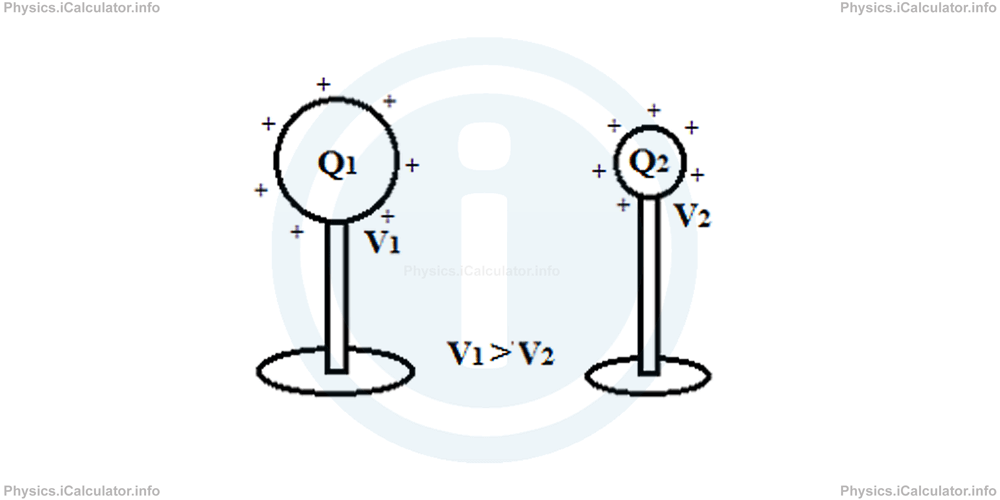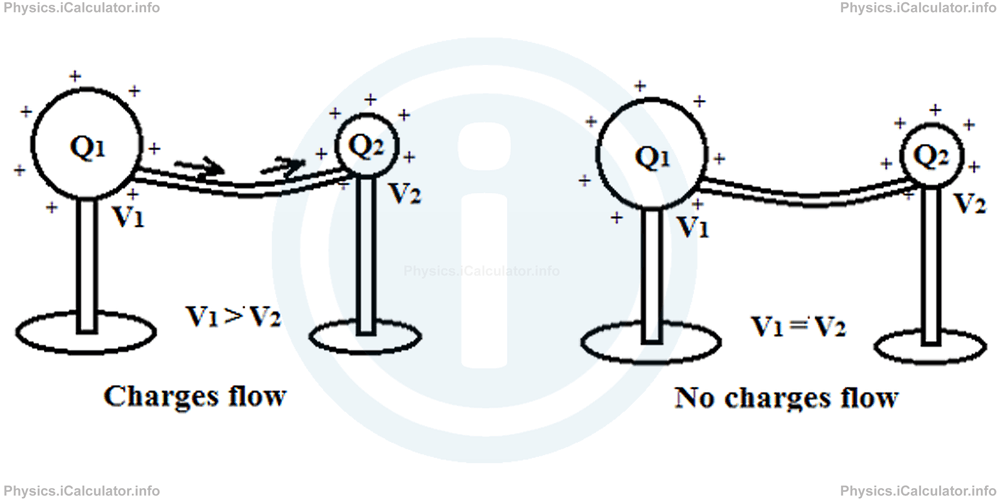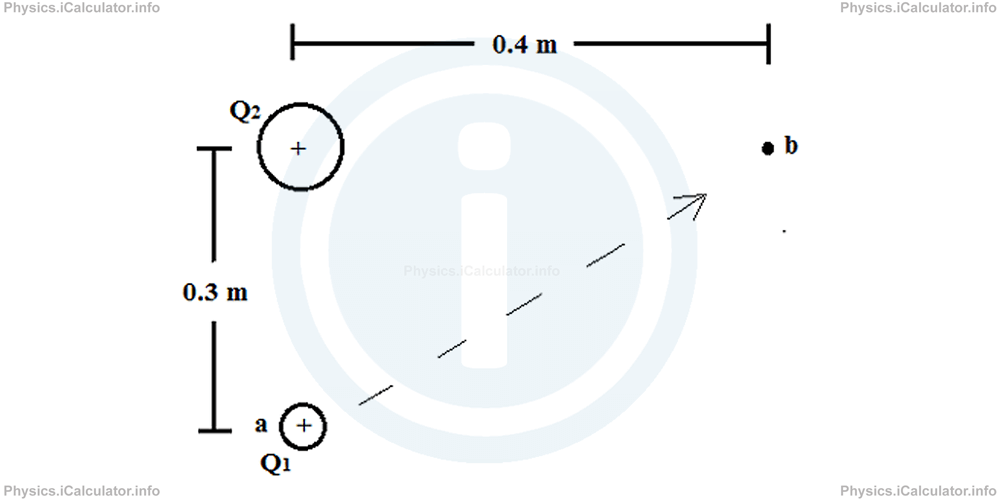Menu
Physics Lesson 14.5.4 - Potential Difference between two Conducting Spheres
Please provide a rating, it takes seconds and helps us to keep this resource free for all to use
Welcome to our Physics lesson on Potential Difference between two Conducting Spheres, this is the fourth lesson of our suite of physics lessons covering the topic of Electric Potential, you can find links to the other lessons within this tutorial and access additional physics learning resources below this lesson.
Potential Difference between two Conducting Spheres
Let's consider two charged conducting spheres of different potentials V1 and V2 as shown in the figure.

If we connect the two spheres by a conducting wire, an electric field is generated inside the wire as the spheres are at different potentials. Electric charges start flowing from the sphere with the highest potential to that with the lowest potential. This is similar to water when it flows from a higher to a lower level. In this way, the work done by the electric forces causes a charge transfer. This process continues until both spheres reach the same value of potential, i.e. until the potential difference becomes zero. Then, the charges flow stops.

If we take the radii of the above spheres as r1 and r2, it is obvious that they share the total charge in proportion to their radii. After the contact, the spheres will have the charges q1 and q2. From the law of charge conservation, we can write:
When electric potentials of the two spheres become equal, we have
or
Thus, we can write
Therefore, the law of charge distribution is written as
or
Rearranging for q1, we obtain
or
Similarly, for q2 we obtain
Thus, the common potential of each sphere after the contact, is
= k × Q1 + Q2/r1 + r2
The last formula can be generalized for more than two charges as well, i.e.
Example 4
Calculate the work done when a charge of Q1 = 4 μC is moved from the point a to the point b under the effect of a Q2 = 80 μC charge as shown in the figure.

Solution 4
The work done by electric forces is positive. This means the potential energy of the system decreases as both charges are positive. We have r1 = 0.3 and r2 = 0.4 m. Thus,
= Q1 × (Vb - Va )
= Q1 × k × Q2/r2 - k × Q2/r1
= k × Q1 × Q2 × 1/r2 - 1/r1
= 9 × 109 × 4 × 10-6 × 80 × 10-6 × 1/0.4 - 1/0.3
= 36 × 80 × -10/12 × 10-3 J
= -2.4 J
You have reached the end of Physics lesson 14.5.4 Potential Difference between two Conducting Spheres. There are 8 lessons in this physics tutorial covering Electric Potential, you can access all the lessons from this tutorial below.
More Electric Potential Lessons and Learning Resources
Whats next?
Enjoy the "Potential Difference between two Conducting Spheres" physics lesson? People who liked the "Electric Potential lesson found the following resources useful:
- Conducting Spheres Feedback. Helps other - Leave a rating for this conducting spheres (see below)
- Electrostatics Physics tutorial: Electric Potential. Read the Electric Potential physics tutorial and build your physics knowledge of Electrostatics
- Electrostatics Revision Notes: Electric Potential. Print the notes so you can revise the key points covered in the physics tutorial for Electric Potential
- Electrostatics Practice Questions: Electric Potential. Test and improve your knowledge of Electric Potential with example questins and answers
- Check your calculations for Electrostatics questions with our excellent Electrostatics calculators which contain full equations and calculations clearly displayed line by line. See the Electrostatics Calculators by iCalculator™ below.
- Continuing learning electrostatics - read our next physics tutorial: Electric Flux. Gauss Law
Help others Learning Physics just like you
Please provide a rating, it takes seconds and helps us to keep this resource free for all to use
We hope you found this Physics lesson "Electric Potential" useful. If you did it would be great if you could spare the time to rate this physics lesson (simply click on the number of stars that match your assessment of this physics learning aide) and/or share on social media, this helps us identify popular tutorials and calculators and expand our free learning resources to support our users around the world have free access to expand their knowledge of physics and other disciplines.